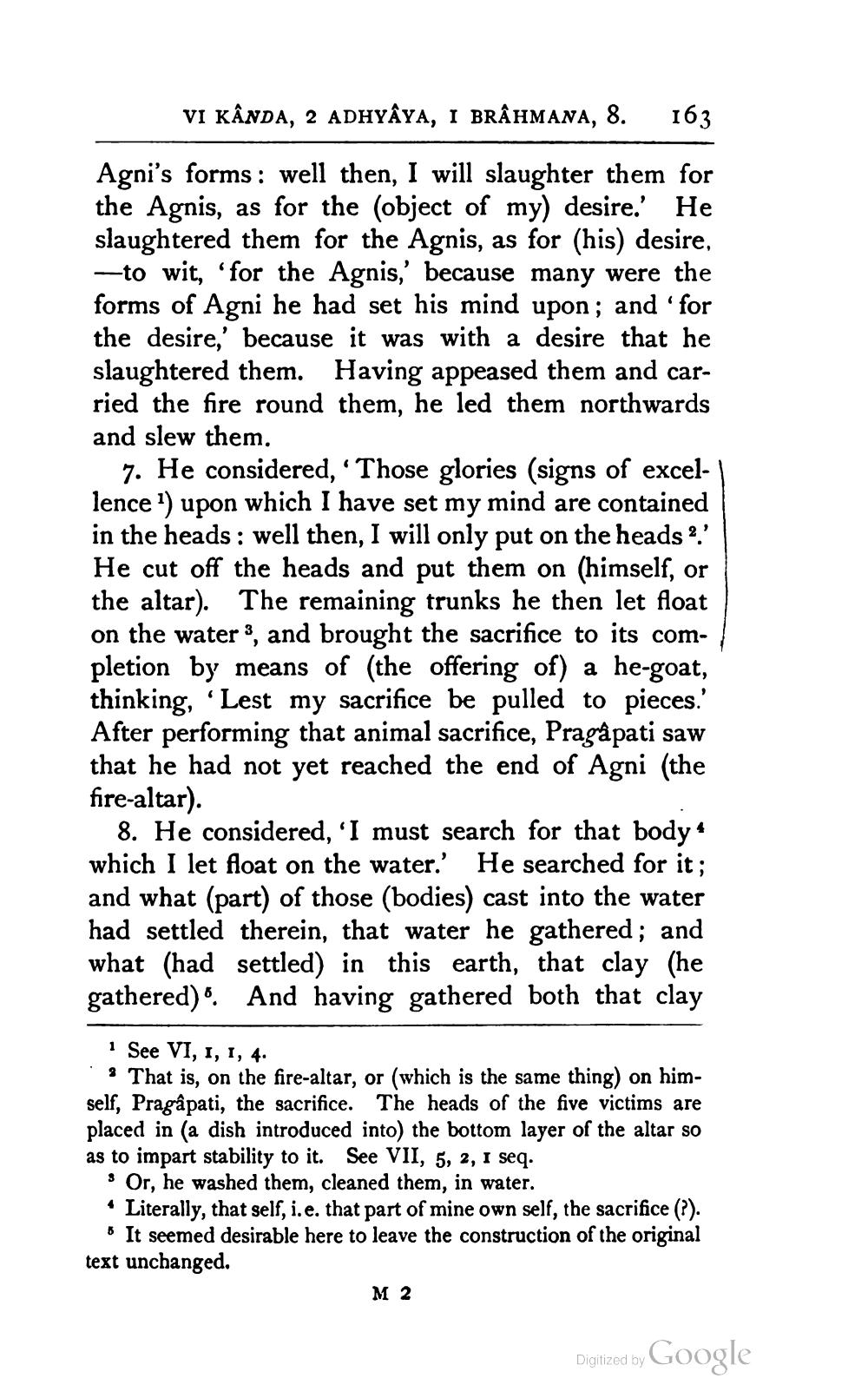________________
VI KÂNDA, 2 ADHYÂYA, I BRÂHMANA, 8.
163
Agni's forms: well then, I will slaughter them for the Agnis, as for the object of my) desire. He slaughtered them for the Agnis, as for (his) desire, —to wit, 'for the Agnis,' because many were the forms of Agni he had set his mind upon; and for the desire,' because it was with a desire that he slaughtered them. Having appeased them and carried the fire round them, he led them northwards and slew them.
7. He considered, “Those glories (signs of excel- | lence ) upon which I have set my mind are contained in the heads : well then, I will only put on the heads ?' He cut off the heads and put them on (himself, or the altar). The remaining trunks he then let float on the water 3, and brought the sacrifice to its completion by means of (the offering of) a he-goat, thinking, 'Lest my sacrifice be pulled to pieces.' After performing that animal sacrifice, Pragàpati saw that he had not yet reached the end of Agni (the fire-altar).
8. He considered, 'I must search for that body which I let float on the water.' He searched for it; and what (part) of those (bodies) cast into the water had settled therein, that water he gathered; and what (had settled) in this earth, that clay (he gathered)". And having gathered both that clay
See VI, 1, 1, 4. . 3 That is, on the fire-altar, or (which is the same thing) on himself, Pragâ pati, the sacrifice. The heads of the five victims are placed in (a dish introduced into the bottom layer of the altar so as to impart stability to it. See VII, 5, 2, I seq.
8 Or, he washed them, cleaned them, in water. * Literally, that self, i.e. that part of mine own self, the sacrifice (?).
* It seemed desirable here to leave the construction of the original text unchanged.
M 2
Digitized by Google




